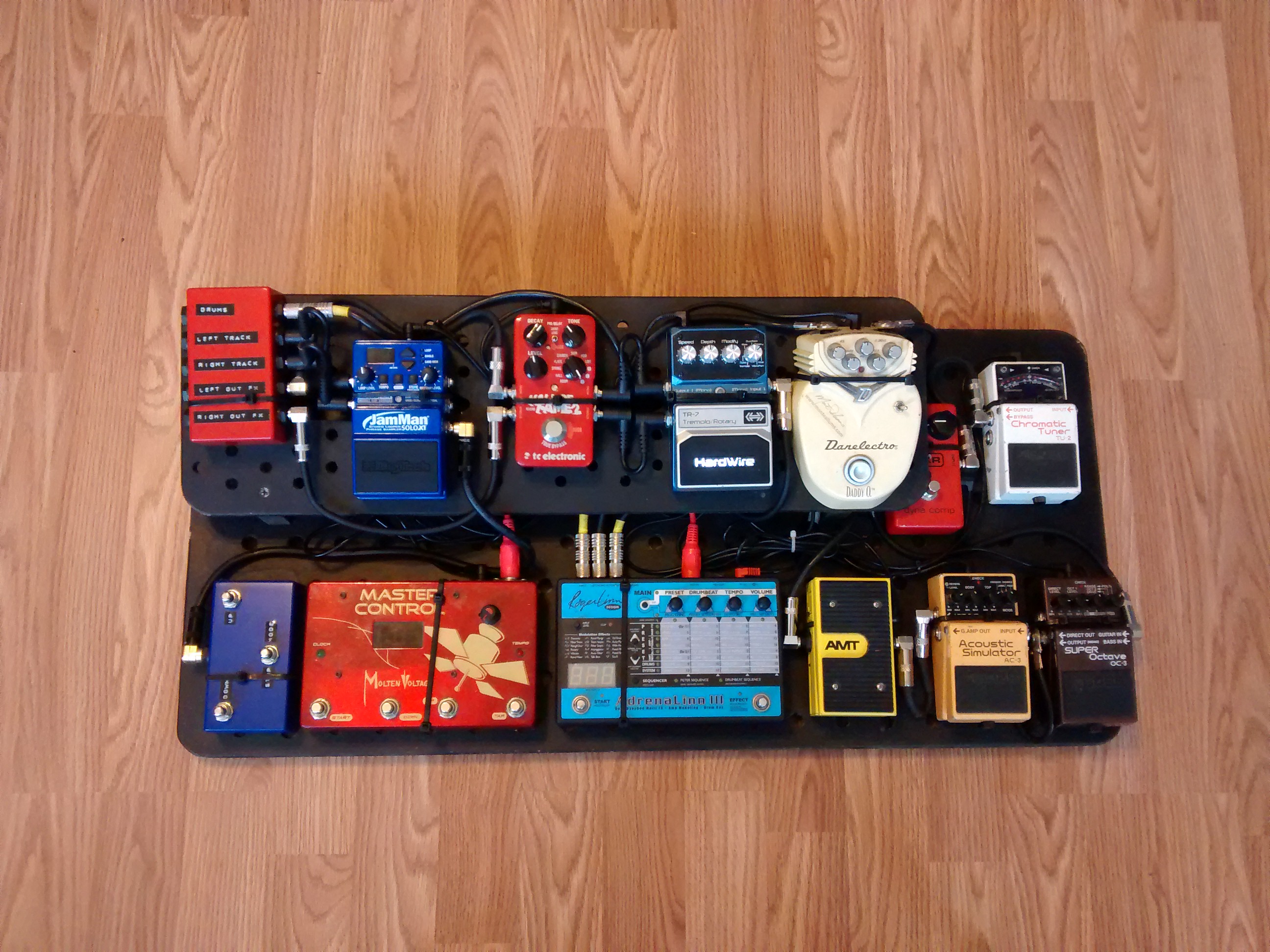This is what I’m currently using to play guitar in church. It looks kind of complicated, but there’s a method to the madness.
One of the goals I’ve had for this pedalboard since I started building it was to create a one-man-band busking/performance setup. And with this last piece, I’m very close.
I added a Digitech Jamman Solo XT- but not for looping. No, I still need a looper that can sync to MIDI clock, and there’s only a few on the market. I’ll probably end up getting a TC Ditto X4, or a Pigtronix Infinity for that. The Jamman is for running backing tracks. That’s right, I can load up the SD card in it with .wav files, and use it for background pads, full-blown tracks, or whatever. I can even run click tracks on one side if I have to run a full backing track.
Of course, minimalism is something I consider an art form. And this board isn’t very minimal. In fact, it’s getting pretty big. And it makes me wonder, “Should I replace it with a single thing?”
But the only things I can find that would do what this board does would be either a laptop, or something like a TC Helicon Voicelive 3 Extreme. Neither one is a cheap alternative.
If my goal is to lead music solo, then this board is moving in the right direction. But there’s still more it could do: I can add vocal effects, and a programmable MIDI controller, and a switcher, and a looper…
At this point, I have more money tied up in these pedals than I do in all my guitars and amp put together. But would it be simpler to just sell all of that and use a laptop? Could that even be a possibility? Continue reading “Pedalboard or Laptop?”

